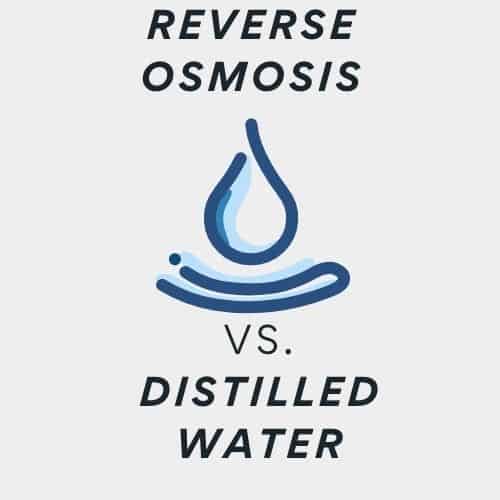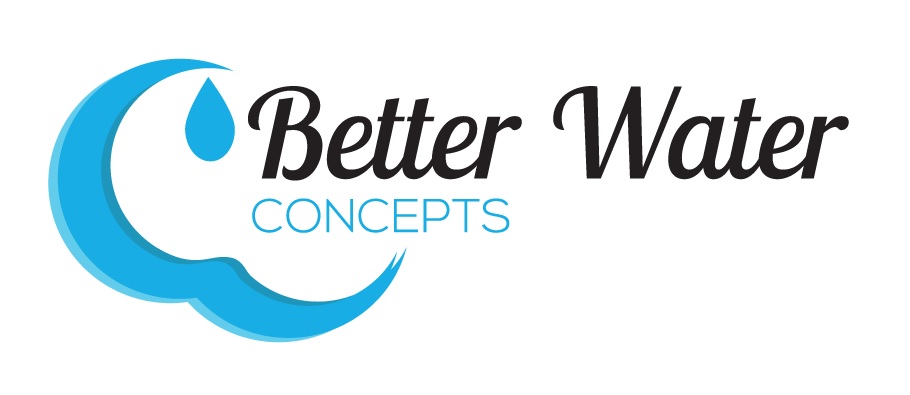Home Water Treatment
Reverse Osmosis vs Distilled Water – Which One Will You Choose?
We're an affiliate
We hope you love the products we recommend! Just so you know, we may collect a share of sales or other compensation from the links on this page. Thank you if you use our links, we really appreciate it!
Reverse Osmosis vs Distilled Water – Which One Should You Choose?
What is Reverse Osmosis Water? What is Distilled Water?

Water is a critical component of our everyday lives. Understanding what makes it healthy and how to maintain it has become a priority for many people.
In this blog post, we will look at reverse osmosis vs distilled water to see which one is better for you.
Purity of the Water
The purity of the water is a big concern for many people living in cities. The water from the tap may have impurities, which lead to health problems. A reverse osmosis filter and a water distiller are two options that people can use to purify their water.
They will both produce nearly pure water. The only difference is how they go about producing pure water.
What is Distilled Water?
You create distilled water by boiling the water, then cooling down the steam. The cooling condenses the water vapor back into a liquid, which you can then collect into containers.
It’s also called pure drinking water because there are tiny amounts of contaminants in it. Distillers are very effective in removing microbes (bacteria, viruses, protozoa), contaminants (lead, mercury, copper, chromium) and minerals (calcium, magnesium).
What is Reverse Osmosis (RO) water?
Reverse Osmosis water is created when the filtration system forces the tap or well water through a semipermeable membrane under pressure. The membrane filters out particles like arsenic, copper, mercury, zinc and other heavy metals along with bacteria, viruses and other microbes.
What are the Pros and Cons of Reverse Osmosis Water?
Reverse osmosis water is the most common type of drinking water among homeowners today. It has become extremely popular in recent years, thanks to its many advantages. However, reverse osmosis water isn’t for everyone and it has some cons too. Here are three pros and three cons of reverse osmosis water you should know about.
Pros:
- Removes up to 97% of all contaminants and pollutants. Reverse osmosis water can remove up to 97 percent of total dissolved solids (TDS) such as arsenic, lead, nitrates, copper, chromium-6 and other harmful toxins from the water. It also removes 99 percent of bacteria, viruses and chlorine.
- Produces pure water on demand. The best reverse osmosis filters can provide over 50 gallons per day (gpd).
- RO filters last longer. Most reverse osmosis water filters have a filter life of 2 to 5 years for the RO membrane. These are much more cost effective in the long run compared to distilled water, which can get quite expensive when consumed regularly.
Cons:
- Wastes a lot of water. Reverse osmosis water is about double as expensive as regular tap water. A reverse osmosis system produces about two gallons of waste for every gallon of filtered drinking water, resulting in more wastage than other methods, such as distillation or filtration.
- Good for drinking only. Reverse osmosis water is pure, making it perfect for drinking and cooking. But, due to the amount of wasted water, it is not good for general use like washing dishes.
- Are damaged by chlorine and chloramines. Reverse osmosis filters require an activated carbon cartridge to remove chlorine. You need to change this filter more frequently.
What are the Pros and Cons of Water Distiller?
Water distillers are not as popular. This may be because of the amount of energy consumption. Or it might be the time to produce a gallon of water turns people off to them.
Pros:
- Distilled water tastes better than other types of water.
- A water distiller is easy to maintain. You only need to empty the residual tray periodically.
- Small countertop distillers are inexpensive (starting under $100) and take up no more counter space than a coffee maker (larger water distillation units can be $500 to $2500).
- No installation required on smaller units. You just unbox the unit, fill it with water and plug in the distiller. You usually connect larger units to the water supply.
Cons:
- It costs more to produce pure water with a water distiller than other purification systems because of the energy required to heat water to boiling point, then collect and cool the steam.
- They take a long time to produce a gallon of water (up to 4 hours for a gallon)
- Distillers also require an activated carbon filter.
- Unable to produce pure water on demand
Can I Just Buy Reverse Osmosis or Distilled Water at the Grocery Store?
Absolutely! You don’t have to purchase a Reverse Osmosis filter or Water Distiller. You can purchase either at the grocery store. I have purchased both and they are about the same price.
The downside to purchasing bottles or gallon jugs is you have to have room to store it. And you have to maintain an inventory of water so you don’t run out. Not to mention the impact on the environment from the disposal of empty jugs and bottles.
Some stores have a reverse osmosis water dispenser. You can fill your own jugs for a small fee.
Health Benefits of Reverse Osmosis and Distilled Water
When it comes to reverse osmosis vs. distilled water, they both produce nearly pure water. That means any harmful contaminant like lead, arsenic, chromium and chlorine will not be in the water in any dangerous amounts. Both can help flush harmful toxins out of the body and protect against health risks.
It is important to understand that reverse osmosis filters and water distillers remove nearly all contaminants. But the water is not perfectly pure. There is still a tiny amount of contaminants that make it through the process. The amount of contaminants is so small that there is little concern.
It’s just that the quality of the water is not suitable for a laboratory. In order for either water to be used in a laboratory setting, the water would need to treated multiple times.
People use terms like double or triple distilled water or double pass reverse osmosis referring to laboratory grade water.
Beware of Pure Water
Another important thing to understand is these devices also remove beneficial minerals like calcium and magnesium and electrolytes. Under normal living, you can probably replace these minerals and electrolytes. But, if you are fasting for multiple days, you could get into a dangerous situation.
In this case, or if you are deficient in calcium or magnesium, you should add the beneficial minerals back into your water.
Reverse Osmosis vs Distilled Water – Which One Should You Choose?
We hope you enjoyed this blog post on reverse osmosis vs distilled water. The bottom line is that you should drink the water best suited for your needs. Reverse osmosis and distilled both provide clean, safe drinking water with the same level of quality.
If price point is an issue, go with a reverse osmosis because it’s cheaper than a comparable distiller. If your water needs are small, you can go with a countertop distiller. It is convenient and doesn’t require installation.
If you would prefer to just buy at the grocery store, try both and see which one is best for you. It is only about a dollar a gallon.
The choice is yours? Which will you choose?
